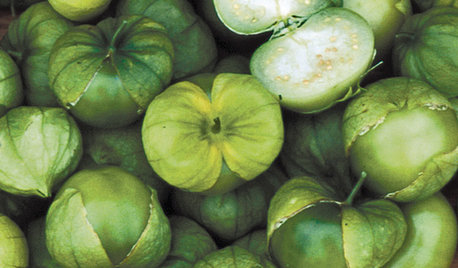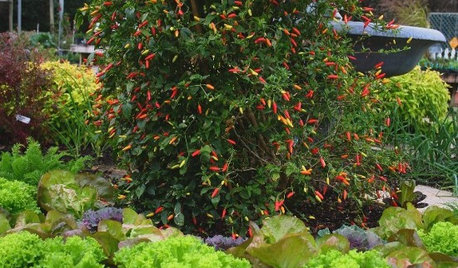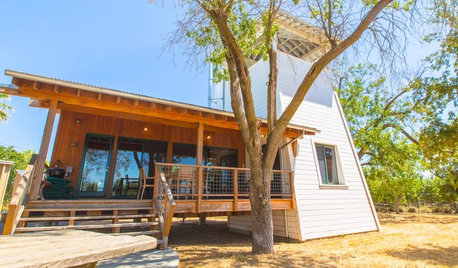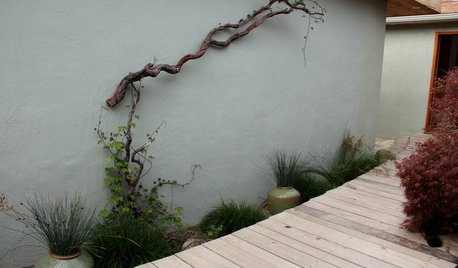I have been making Annie's Salsa for a few years and love it. I ran across this recipe that has the option of roasting the tomatoes and uses roasted Anaheim peppers. I think it would be interesting to see what roasting some of the veggies adds to the taste. A lot of the recipe is similar to Annie's and to my untrained eye it looks safe. I would like the opinion of those more expert eyes.
jude
Canned Tomato Salsa Recipe
Prep time: 20 minutes Cook time: 45 minutes
Before starting, prepare your workspace so that it is clean and uncluttered. If you don't want to roast your own green chiles, you can sub with about two 7-ounce cans of green chiles, chopped. This recipe uses specific amounts of ingredients, balancing the non-acidic ingredients with the amount of added acid needed to make the recipe safe. Do not increase the amount of green chiles beyond 1 1/2 cups, or decrease the amount of tomatoes less than 7 cups.
Ingredients
5 lbs of tomatoes
1 lb large Anaheim green chiles (5-6 chiles)
3 jalapeno chilies, seeded and stems removed, chopped
1 1/2 cups chopped onion
3 cloves garlic, minced
1 cup apple cider vinegar
1/2 cup loosely packed fresh chopped cilantro (including stems)
2 teaspoons dried oregano
1/2 teaspoon ground cumin
2 teaspoons salt
2 teaspoons sugar
Canning equipment needed:
5 to 6 pint-sized canning jars, with rings and new lids
A very large stockpot or canning pot (16-qt)
A flat steamer rack on which to place the filled jar for the water bath canning, so that they don't touch the bottom of the pan and crack from excess heat
Canning equipment recommended:
Canning tongs to make it easy to lift the jars in and out of boiling water
Rubber or latex coated gardening gloves to make it easier on your hands for handling hot jars
Method
1 Prepare for canning. Place steamer rack in the bottom of a large (16-qt) stock pot or canning pot. Place new or clean mason jars on the rack. Fill the jars with water and fill the pot with just enough water to come to the top of the jars. Heat water to a simmer. Simmer for 10 minutes. (Keep the jars warm while preparing the salsa.)
Have a kettle half filled with water ready to boil, to use to sterilize the jar lids a few minutes before canning.
2 Roast the Anaheim green chile peppers until blackened all over. The best way to do this is directly over a gas flame on the stovetop (see how to roast chiles over a gas flame.) If you don't have a gas cooktop you can broil the chiles, or blister them on a grill. Note that it is not essential that the chile peppers be cooked through, only that the outer tough skin is blistered and blackened. This is what will help with flavor. Also it will make it easy to peel the chiles. Just put the chiles near a heat source until blistered and blackened, and turn them so that they get blackened on all sides. Then place the chiles in a brown paper bag (or in a covered bowl), close the bag and let the chiles steam in their own heat for a few minutes. Then gently rub off the outer skin and discard. Cut away the stems and remove the seeds and any prominent veins. Chop up the chiles and set aside; you should have 1 cup of chopped chiles. Do not use more than 1 1/2 cups of chopped chiles.
3 Prepare the tomatoes. You want the tomatoes peeled, and there are several ways of doing that. Blanching them is easiest; grilling or broiling will result in more flavor. To blanch them, score the ends of the tomatoes and place them in boiling water for a minute. If you are going to grill or broil the tomatoes, I recommend coring them first. Grilling is best with whole plum tomatoes; grill them on high direct heat until blackened in parts and the peels are cracked. Broiling works with any sized tomato. Just cut them in half and place the cut side down on a rimmed baking sheet or roasting pan. Broil until the peels are blackened in parts.
Remove the tomatoes (from water, grill or broiler) and let cool to the touch. Remove and discard the peels. Cut away any cores if you haven't done so already. Chop the tomatoes taking care to save any juices that may come out of them. Starting with 5 pounds of tomatoes you should end up with about 8 cups of chopped tomatoes and juices. (You must use at least 7 cups of tomatoes.) Place them in a bowl and set aside.
4 Put all of the ingredients into a large (8-qt) stainless steel pot. (Do not use aluminum or the acidity of the sauce will cause the aluminum to leach into the sauce.) Bring to a boil, reduce to a simmer. Cook uncovered for about 10 minutes.
5 If you want your salsa to be more smooth than chunky, use an immersion blender to pulse it a few times, or working in batches ladle about half of it into a blender and purée.
6 Adjust seasonings. If too acidic to taste, you can balance it with a little more sugar.
7 Ladle salsa into canning jars, leaving 1/2-inch head space. Wipe the rims with a clean, dampened paper towel so that there is no residual food on the rims. Place canning lids on the jars. Screw on the lid rings. Do not over-tighten or you may not get a good seal. Air does need to escape from the jars during the next step, the water bath.
8 Place the filled and lidded jars back onto the rack in the large stock-pot of hot water you used to sterilize the jars in step one. You may need to remove some of the water from the pot to prevent it from overfilling. Cover the jars with at least 1-inch of water. Bring to a rolling boil and process for 15 minutes (20 minutes for altitudes 1000 to 6000 ft, 25 minutes above 6000 ft). Then turn off heat and let the jars sit in the hot water for 5 minutes. Remove jars from the water bath and let sit on a counter for several hours until completely cool. The lids should "pop" as the cooling salsa creates a vacuum under the lid and the jars are sealed. If a lid has not sealed, either replace the lid and reprocess in a water bath for another 15 minutes, or store in the refrigerator and use within the next few days.
Remember to label the cans with the date processed. (I use a Sharpie on the lid.) Canned salsa should be eaten within a year.
Yield: Makes about 5 pints.













digdirt2
jude31Original Author
Related Discussions
Newbie - Supplies?
Q
Can I can this tomato salsa recipe?
Q
Small Batch "Salsa Bruschetta-Style" subs?
Q
Pressure Canning Homemade Salsa using Canned Tomatoes
Q
readinglady
digdirt2
hcoon
readinglady
hcoon
buyorsell888
jude31Original Author
digdirt2
digdirt2